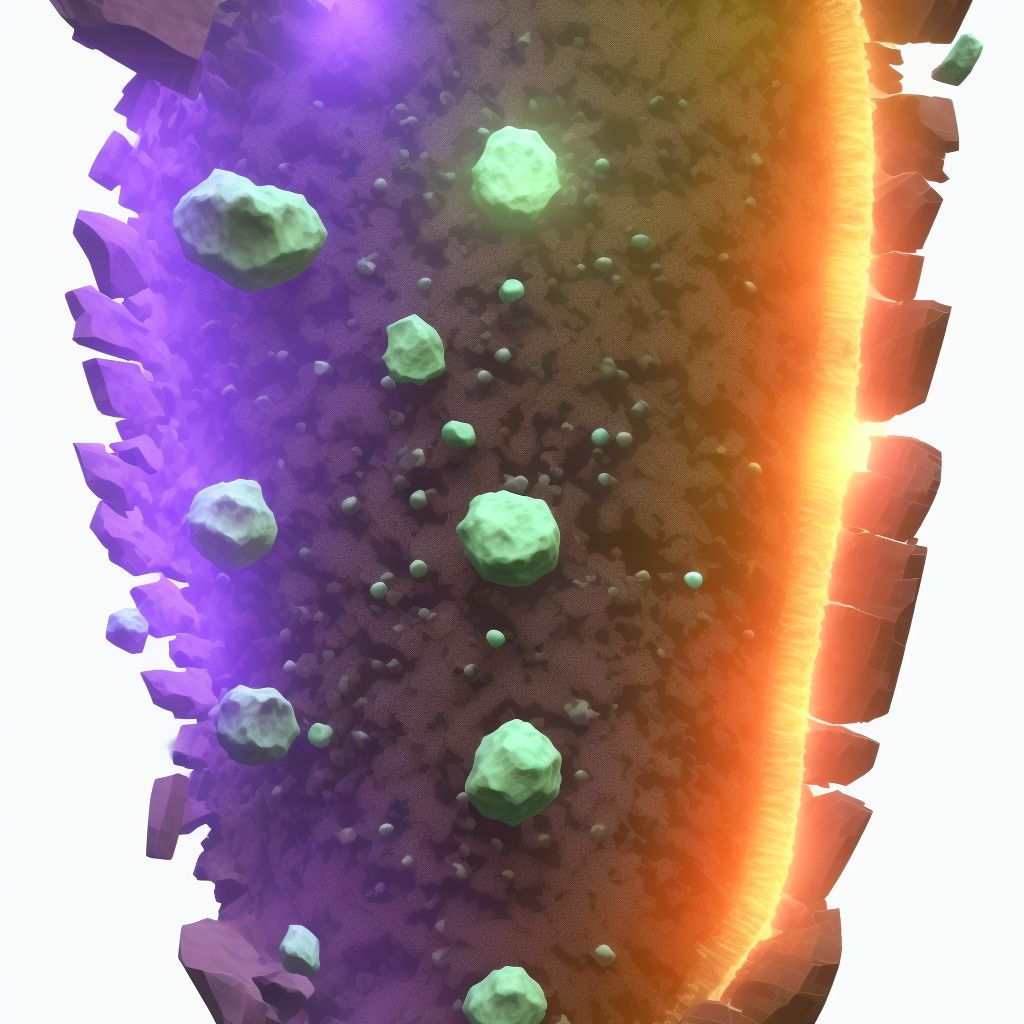
Nondisplaced spiral fracture of shaft of left tibia, initial encounter for open fracture type IIIA, IIIB, or IIIC Save
ICD-10 code: S82.245C
Disease category: S82.245: Nondisplaced spiral fracture of shaft of left tibia
Nondisplaced Spiral Fracture of Shaft of Left Tibia: Understanding Open Fracture Types IIIA, IIIB, or IIIC
A nondisplaced spiral fracture of the shaft of the left tibia is a type of bone injury that occurs when the tibia, or shinbone, is fractured in a spiral pattern without being displaced from its original position. This fracture is commonly encountered in medical settings, and it is crucial to classify the fracture type accurately to determine the appropriate course of treatment.
Open fractures are those in which the broken bone has pierced through the skin, increasing the risk of infection and other complications. Open fractures are further categorized into three types: IIIA, IIIB, and IIIC. These classifications help healthcare professionals assess the severity of the injury and provide appropriate care.
- Type IIIA: In this type of open fracture, the wound is less than 1 cm long, the soft tissue damage is minimal, and the bone is relatively clean.
- Type IIIB: Type IIIB open fractures involve extensive soft tissue damage, creating a significant wound. The bone may be severely contaminated or comminuted, meaning it is broken into multiple pieces.
- Type IIIC: The most severe of the open fractures, type IIIC involves injuries to major blood vessels, nerves, or muscles surrounding the fractured bone. This type of fracture may require immediate surgical intervention.
When a patient presents with a nondisplaced spiral fracture of the shaft of the left tibia, healthcare professionals conduct a thorough examination to determine the open fracture type. This assessment involves evaluating the length and severity of the wound, assessing soft tissue damage, and checking for any vascular or neurological compromise.
Accurate classification of the open fracture type is crucial for determining the appropriate treatment plan. However, it's important to note that this article does not cover treatment options for this specific fracture. Treatment decisions often involve a combination of surgical intervention, wound care, and immobilization techniques, depending on the type and severity of the fracture.
In conclusion, a nondisplaced spiral fracture of the shaft of the left tibia can lead to an open fracture IIIA, IIIB, or IIIC, depending on the severity of the wound and soft tissue damage. Accurate classification of the fracture type is essential in determining the appropriate treatment for a patient. If you suspect you have this type of fracture, seek immediate medical attention to obtain an accurate diagnosis and appropriate care.
Treatment of Nondisplaced spiral fracture of shaft of left tibia, initial encounter for open fracture type IIIA, IIIB, or IIIC:
Treatment Options for Nondisplaced Spiral Fracture of Shaft of Left Tibia
A nondisplaced spiral fracture of the shaft of the left tibia can be a challenging injury to deal with, but fortunately, there are several effective treatment options available. The treatment approach may vary depending on the severity of the fracture, classified as type IIIA, IIIB, or IIIC. Let's explore som...
To see full information about treatment please Sign up or Log in